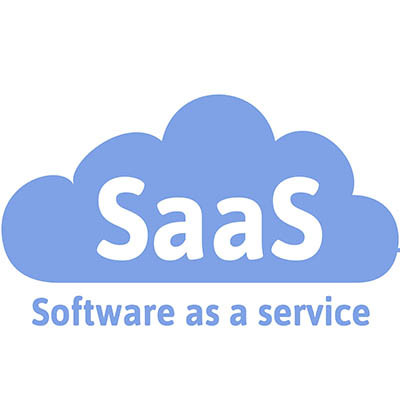It’s common for business owners to view technology costs as an annoying utility bill rather than money that could be the first step in a strategy to rapidly grow their business. There is a massive difference between spending money to tread water and spending money to swim faster, however. To determine if your current IT budget is a drain or a driver, there are some questions you will need to ask. Here are some:
Integrid LLC Blog
We’ve all been there: You’re deep into a complex problem, finally finding your rhythm, when, bing.. A quick question pops up on one of the platforms you use to communicate (we all have several). You answer it in thirty seconds and try to get back to work.
If this happens one time, it might be okay, but if it happens repeatedly as the day goes on; the damage is already done.
We’ve all seen the Internet represented as an iceberg in images and videos explaining the deep web. The surface web—the part you use every day—is just the tip. Below that is the Deep Web (password-protected sites), and at the very bottom is the Dark Web, a hidden layer where anonymity is the primary currency. From a business perspective, the Dark Web isn’t just a scary place; it is a thriving marketplace for your company’s stolen assets.
Disruptions to your operations are no longer a possibility, but an inevitability. Situations like natural disasters, major IT failures, and security breaches happen every day for businesses all over the world, and you can bet that each of them is scrambling to minimize downtime to keep their reputations and bottom lines in check. What they might not know is that a business continuity strategy is at the heart of any successful recovery, and despite what you might think, it’s easier to carry out than you might suspect.
Over the next week or so, countless gingerbread houses will be created and then consequently destroyed. During that initial creative process, you’ll get to see careful preparation and precision, which should yield a longer-lasting, more sustainable product. You can apply a similar philosophy to handling your business’ data; with the right structures in place (like the 3-2-1 rule for data backup), you’ll find that your data is more resilient, sound, and less prone to, well, crumbling.
Does your business view its IT as just another necessary expense? Many small businesses think of IT as a simple box to check, a cost center that eats into profits and breaks down too frequently to actually yield a return on investment. We have news for you; modern IT management gives you a means not only to maintain the status quo, but to grow into a business that remains competitive in the long term.
As a business owner, you understand the need for harmony and efficiency. Whether it's the smooth operation of your supply chain, the flow of customers through your store, or the synchronization of your sales and marketing teams, when everything works together, your business sings.
Now, apply that same principle to the invisible but vital engine of your modern company: Information Technology (IT).
When companies talk about cybersecurity, they usually brag about their expensive technology they use to do the job: the firewalls, the fancy encryption, and the smart detection software. The thing that matters most, however, your actual employees, gets completely overlooked.
It only takes one wrong click for a whole network to crash. Even the smartest, most well-meaning and vigilant co-worker can accidentally unleash chaos under the right circumstances.
When companies talk about cybersecurity, they usually brag about their expensive technology they use to do the job: the firewalls, the fancy encryption, and the smart detection software. The thing that matters most, however, your actual employees, gets completely overlooked.
It only takes one wrong click for a whole network to crash. Even the smartest, most well-meaning and vigilant co-worker can accidentally unleash chaos under the right circumstances.
Does your business technology drive you up the wall with uncertainty? Are you reacting to IT problems when you would instead prefer to proactively leverage technology to drive your business’ growth? It’s not your fault; it’s the result of a phenomenon known as the Executive IT Gap, and it’s keeping you trapped in an endless cycle of reactive, costly, and inefficient technology decisions that are slowing your business down.
Are you exhausted from constantly dealing with garbled audio, dropped calls, and confusing telephone bills from your vendor? You deserve better, and while you know it, your telephone provider doesn’t. Thankfully, we do as well, and we have just the solution for you: Voice over Internet Protocol, or VoIP.
However, not all VoIP solutions are the same, and what works for one business might not work for yours. Today, we want to explore some of the mistakes SMBs make when selecting a VoIP vendor.
Clutter is a part of life, but one place you absolutely don’t want it is your business’ network. This clutter is called “digital cruft,” which 1) is an actual word, and 2) creates serious problems if you let it accumulate. Your digital cruft can lead to significant vulnerabilities that put your network at risk.
How often have you been frustrated by the challenges of installing new software? How about expiring licenses or outdated tools that need to be upgraded frequently to prevent them from becoming obsolete? These are all problems associated with buying software licenses, and they can all be avoided through the smart use of Software as a Service.
By “renting” access to applications with a SaaS model, you can lay the foundation for a more efficient, secure, and scalable infrastructure, all while potentially setting yourself up to punch at a higher weight class than your SMB might have been capable of in the past.
Network bottlenecks are some of the biggest problems that businesses face in their networking architecture. While you might be paying your ISP for a certain speed standard, chances are you’re not getting it, especially if you’re relying on a consumer-grade router. If your network can’t handle all the abuse you throw at it day to day, then you could be putting your productivity and profits in jeopardy.
In IT, we often talk in terms of firewalls, encryption algorithms, and next-generation detection and response tools. We meticulously patch systems, configure complex security policies, and deploy the latest hardware. After two decades in this field, I can tell you where the biggest, most persistent vulnerability lies: the people.
Most modern businesses are powered by their on-premise server hardware assuming that it creates a more secure environment for them. While having your data close by, where you can easily access it, sounds like a great idea, know that there are also issues that arise from these kinds of arrangements. In fact, your business might be the most dangerous place you can host your data. Here’s why.
If and when an employee departs from your business, they should go through a comprehensive offboarding process. This process should include the physical handoff of keys, laptops, and any other assets or resources they used during their employment with your business. While it’s easy enough to collect these physical items, it’s harder to shore up your business on the digital side of things.
As a cybersecurity professional, I've seen organizations of all sizes and sectors make a critical, often fatal, mistake: they wait for the water to boil. They operate under a reactive cybersecurity model, adopting the same slow, passive approach as the hapless subject of the boiled frog analogy.
It’s a tale I recently rediscovered, and it's a chillingly perfect metaphor for modern cyberrisk. Imagine a frog enjoying a cool bath as the water is slowly, almost imperceptibly, heated. It thinks it’s enjoying a relaxing bath until the water reaches a lethal temperature. By then, it’s too late. The danger has crept up, and the frog is boiled.
Imagine you’re going through your workday, business as usual, until all of a sudden, you lose control of your computer. A message displays across your screen stating that your files have been encrypted and they will be permanently deleted unless you pay a huge ransom. Meanwhile, you’re sitting there thinking, “Why me? Why my small business?”
Cybersecurity is not just for enterprises; it’s for all businesses, big and small. You need to take proactive measures now so you don’t pay for your inaction later.



















